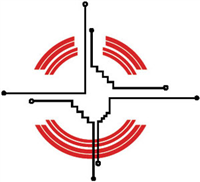- Find Your College
- Scholarships
- Pay for College
-
Articles
- COLLEGES
- Most Recent
- Affordability & Cost
- College Search
- Comparisons
- College Majors & Minors
- Myths
- News & Trends
- Tips, Tools & Advice
- Admissions
- Most Recent
- ACT & SAT
- College Admissions
- College Applications
- Myths
- Online Colleges
- Questions & Answers
- About
- Home
- >
- Browse All Majors
- >
- Visual And Performing Arts
- >
- Visual and Performing Arts, General
- >
- Digital Arts
Digital Arts
Select Type of Degree:
Select State:
|
#1

Gnomon
|
|||||||||||
|
#2

Full Sail University
|
|||||||||||
|
#3

Hussian College-Philadelphia
|
|||||||||||
|
#4

Los Angeles Academy of Figurative Art
|
|||||||||||
|
#5

Academy of Art University
|
|||||||||||
|
#6

Atlanta Metropolitan State College
|
|||||||||||
|
#7

Navajo Technical University
|
|||||||||||
|
#8

Marymount California University
|
|||||||||||
|
#9

NUC University
|
|||||||||||
|
#10

Otis College of Art and Design
|
|||||||||||
|
*The estimated net prices above are College Raptor’s estimate. Please contact the college financial aid office for actual net cost figures.
|
|||||||||||
| Institution | Scaled Score | Acceptance Rate | Annual Degrees Awarded | SAT Score | Est. Net Price * | Median Starting Salary | Save | |
|---|---|---|---|---|---|---|---|---|
 Otis College of Art and Design Los Angeles, CA At Otis College of Art and Design, the three most popular college majors...view more | 0 | 84% | 90 | 1,120 - 1,360 | $49,440 | $50,774 | ||
 The University of Texas at Austin Austin, TX Each year, The University of Texas at Austin awards around 671 degrees to...view more | 0 | 29% | 116 | 1,250 - 1,490 | $18,036 | $48,306 | ||
 The University of Texas at Dallas Richardson, TX At The University of Texas at Dallas, the three most popular college majors...view more | 0 | 65% | 300 | 1,180 - 1,420 | $13,464 | $46,118 | ||
 University of Central Florida Orlando, FL At the University of Central Florida, the three most popular college majors...view more | 0 | 40% | 402 | 1,200 - 1,350 | $13,110 | $47,101 | ||
 Moore College of Art and Design Philadelphia, PA Annually, Moore College of Art and Design awards around 28 degrees to...view more | 0 | 61% | 28 | 1,230 - 1,410 | $44,371 | $53,297 | ||
 University of Kentucky Lexington, KY At the University of Kentucky, the most popular majors students study are...view more | 0 | 92% | 79 | 1,080 - 1,310 | $19,838 | $51,969 | ||
 University of Florida Gainesville, FL At the University of Florida, the most popular majors students pursue are...view more | 0 | 24% | 56 | 1,310 - 1,480 | $11,521 | $46,390 | ||
 University of Southern California Los Angeles, CA At the University of Southern California, the most popular majors students...view more | 0 | 10% | 33 | 1,440 - 1,550 | $41,496 | $45,934 | ||
 Carnegie Mellon University Pittsburgh, PA At Carnegie Mellon University, the three most popular college majors students...view more | 0 | 11% | 1 | 1,500 - 1,570 | $32,964 | $51,902 | ||
 University of Missouri-Columbia Columbia, MO Every year, the University of Missouri-Columbia awards around 627 degrees to...view more | 0 | 77% | 46 | 1,150 - 1,340 | $20,006 | $54,356 |
*The estimated net prices above are College Raptor’s estimate. Please contact the college financial aid office for actual net cost figures.
About Digital Arts
A general, undifferentiated program that focuses on the use of computerized digital images as the primary medium of expression in the visual and performing arts, and that may prepare individuals for a wide variety of careers using new media, including graphic design, digital animation, motion graphics, 3D visualization, game and interactive media design, music and sound design, video production, web design, photography, and other fields.
While Digital Arts offers degrees up to the Masters degree, most students study towards a Bachelors degree. Students major in Digital Arts all over the country, though the major at the Bachelors degree level sees the most graduates in Florida. The average annual income for a graduate with a bachelor's degree in Digital Arts is $39,600.
Careers
Some of the highest paying careers for Digital Arts majors include Art Directors, Special Effects Artists and Animators and Art, Drama, and Music Teachers, Postsecondary. But, something else to consider is how much demand there is for specific jobs. Positions that are in high need that a degree in Digital Arts can prepare you for are Graphic Designers, Photographers and Art Directors.
Top Paying Careers
These are the highest paying careers for Digital Arts majors.
| Career | Median Salary | Average Annual Job Openings | Employment 2022 | Employment 2032 | % Change | |
|---|---|---|---|---|---|---|
| Art Directors | $106,500 | 5,851 | 57,282 | 60,716 | 6% | |
| Special Effects Artists and Animators | $99,060 | 3,985 | 37,863 | 40,958 | 8% | |
| Art, Drama, and Music Teachers, Postsecondary | $80,360 | 1,570 | 19,080 | 19,681 | 3% | |
| Artists and Related Workers, All Other | $74,750 | 593 | 5,936 | 6,148 | 4% | |
| Graphic Designers | $58,910 | 13,657 | 162,269 | 167,600 | 3% | |
| Photographers | $40,760 | 5,949 | 63,729 | 66,340 | 4% |
Most In-Demand Careers
These are the careers in highest demand for Digital Arts majors.
Student Demographics




Subscribe to Our Newsletter
Join thousands of students and parents learning about finding the right college, admissions secrets, scholarships, financial aid, and more.

College Raptor, Raptor, InsightFA, FinanceFirst, and “The Right College. The Best Price.” are registered trademarks of College Raptor, Inc.



